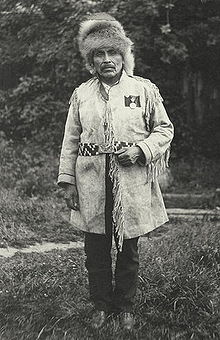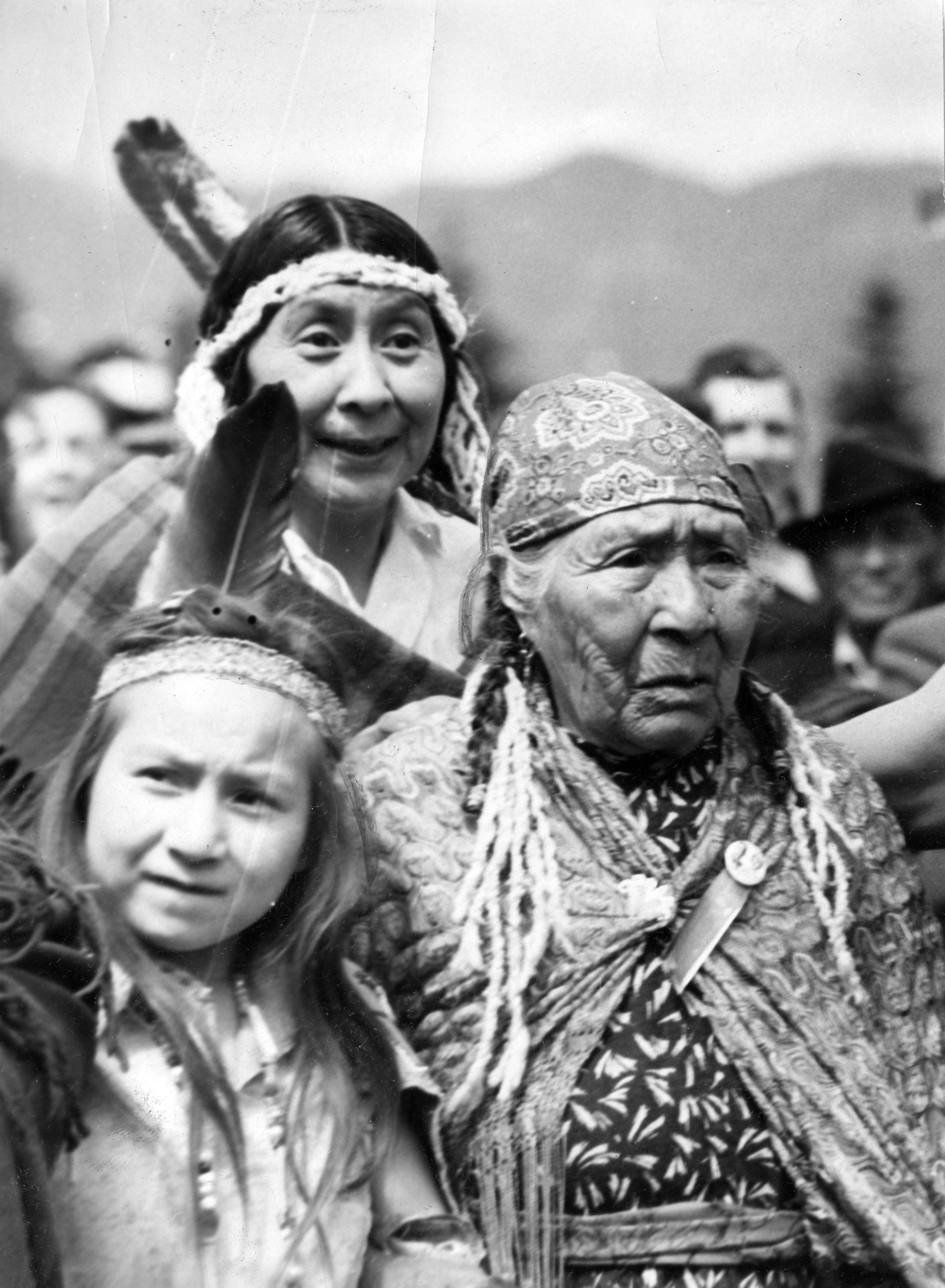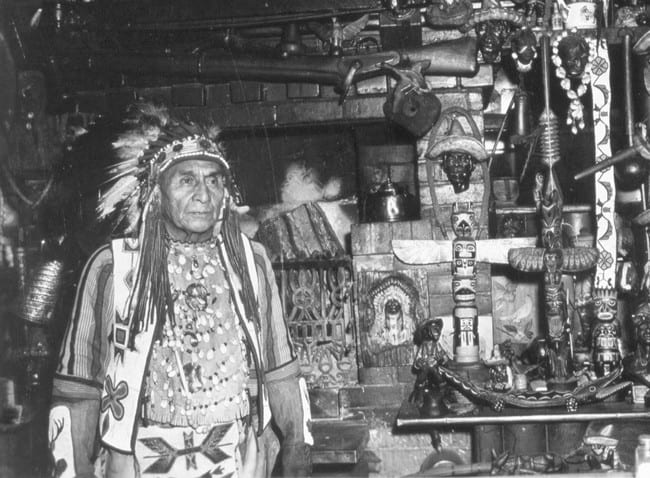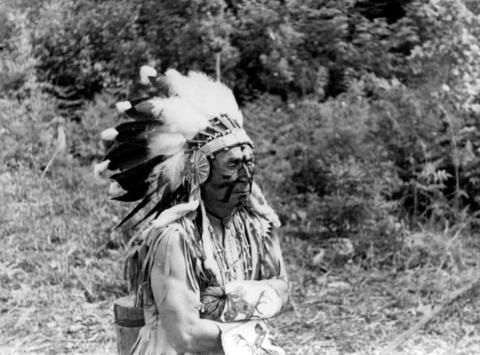Meet the Leader who is willing to kick ass
For a long ass time, Native Americans and Canadian aboriginals have been constantly been oppressed by governments ran by old white geezers fueled with racism. Their land was stolen, forced migration, limited rights, cultural genocide, and other terrible stuff. But this is one instance where the Natives got a chance to have a voice. A voice that allowed the aboriginals in BC to finally have something and win it. Ladies and gentlemen, let me introduce you to the one and only Joe Capilano.

The man, the myth, the legend… Joe Capilano(1854~1910)
A bit of background
Joe Capilano or his native name, Su-á-pu-luck, was born in 1854 in Squamish territory of British Columbia, Canada which at the time, made up 6,372 square kilometres and had a significant portion of the Lower Mainland and the North Shore. Details about his early life are mostly unknown, but it is said that he lived accordingly to the traditional way of life such as fishing and hunting. During the 1860s, Roman Catholicism became very active in the lower mainland and have started work with the natives. Joe was influenced by the Catholic missionaries and eventually converted to Catholicism. He was baptized and later married to a genealogist named Mary Agnes Líxwelut in May 1872. He soon lived in the Catholic Mission reserve in North Vancouver and started to live and raise his family in less traditional ways. He worked in the lumber mill where his colleagues praised him for his impressive strength.

Chief Joe Capilano with his wife Mary
Taking up the role as Chief
The leader of the Squamish, Chief Lawa died in 1895, thus, a new leader had to be decided. Joe Capilano automatically became the new chief for the Squamish thanks to the Catholic missionaries. The Catholics believed that because Joe’s Christian and Western style upbringing, he would be able to convert the Squamish people to Christianity. A number of Squamish aboriginals opposed the idea that Joe should become chief but despite this, Joe managed to move the people to a different place to live. Joe managed to convert the Squamish to follow the religion and build a new church, Joe did not enforce the religion aggressively and allowed the traditional way of living to coexist with Christianity. As time went on, he Joe became more involved with the issues of Native rights in BC. He travelled to Vancouver Island to preach the issues and his leadership even led to the awareness of local newspapers. While he disagreed with the fact that the Natives lost much of their land, he thought that the Natives’ lives were being restricted and constrained due to newer fishing and hunting regulations. He tried to negotiate to the provisional government to solve these issues but despite many attempts, the results were ineffective to say the least.

Joe Capilano unveiling a new totem pole in North Vancouver
Taking things to a new level
Feeling that he need to do something more, Joe went to Ottawa in 1906 to meet with Prime Minister Sir Wilfred Laurier in order to petition to King Edward VII. He along with two other aboriginal leaders, Chief Charley Isipaymilt of Cowichan and Chief Basil David of Shuswap, led the delegation to England to meet King Edward. Because of the respect from colleagues that Joe received, Joe became one of the most suited leaders to meet with the Monarch. The Native leaders wanted to focus on a few major issues. They sought to improve Native-white relations in BC, giving natives the right to vote, lift the potlatch ban, fishing and hunting regulations, or any other regulations or laws that limited the Natives’ ability to be economically and culturally self-sufficient. Land issues was also a problem as many natives believed that the autonomy of their land was being challenged by white settlers who came in without Native approval. It was during this time in preparation for his trip, that Su-á-pu-luck took up the name Kiyapalanexw(Capilano), a name that was meant to emphasize his high status. The Canadian High Commissioner, Lord Strathcona, organized the event. At the meeting, Capilano wore a blanket with green, black, and red diamond patterns as a way to protect him during his meeting in England. He also awarded the King and Queen Alexandra three baskets made by her daughter. The meeting was only 15 minutes long, but the leaders tried their best to discuss their issues with the King.

Joe Capilano and Basil David with translators in London to meet with the King
A disappointing result but a powerful legacy
Although the King felt sympathetic to the natives, the ending result was little to no change. In fact, it is said that the petition from the leaders have never reached to the king. Disappointed, Capilano expelled any Catholics from the Native land and severed ties with the Catholic Church. He believed that the Catholic missionaries failed in helping Capilano in trying to fulfill his mission for equal rights. In turn, Catholic officials rejected him for being too ‘radical’ and was no longer welcome in the religious community. Even though Capilano’s attempt failed, his actions would inspire new political organizations that would fight for native rights such as Indian Tribes of the Province of British Columbia, the Nisga’a Land Committee, and the Allied Tribes of British Columbia, etc. Joe continued to lobby and protest for aboriginal rights to the point where some newspapers called him a ‘nuisance’ and politicians asking that he should be arrested and put to jail. He even went to Ottawa again in 1908 to visit another tribe and preached to fight for their claim in Canada. Joe Capilano died in 1910 but his legacy and influence carried on to the younger generation of aboriginals who wanted to continue pursuing native rights. For many natives, he is seen as hero and a person of dignity and power.

Capilano wearing a feather hairdress for his meeting for the royal family

Capilano’s blanket on display
Lecture Summary
In today’s lecture, we learned more about the advances in architecture, interior design, type design, and art. We looked at people like Frank Wright, an architect who helped continue the Chicago style of buildings but also created multiple print and book design. Soon typography would focus form over function where the design became more important than actually reading it. We see new typefaces like Behrens, but we also see a sharp rise in poster design advertisement for companies. Companies began to use posters to sell their product for the consumer and we also see the first corporate logo in Germany. In architecture, we see Japanese influence coming to the West, ad in art, we see a new trend of African and Japanese inspired Cubism and Expressionism made famous by Pablo Picasso and Cezanne. W also see the first keyframe animation of Gertie the Dinosaur and the start of the Futurist movement as cars started to become more popular among the public. I thought this era is definitely the start of modern era for design in general. Consumerism, posters, typography, cars, etc are starting to become more popular, so the fact that we see newer minimalist designs during this era shows not only how interesting design looked but also why it has started to become more important. The designs and type all look very beautiful and intricate and for the early 20th century, it looks amazing for its time. And the fact that we see more inspiration from other cultures shows that Western art is becoming more varied as oppose to having settle on strict traditional rules.
Sources
http://www.biographi.ca/en/bio/su_a_pu_luck_13E.html
http://scoutmagazine.ca/2013/05/02/you-should-know-more-about-local-first-nations-leader-icon-joe-capilano/
http://vancouverartinthesixties.com/people/99
Canada 150: Joe Capilano rose to prominence with 1906 visit to King Edward in London
Images
https://en.wikipedia.org/wiki/Joe_Capilano
https://searcharchives.vancouver.ca/chief-joe-capilano-wearing-feather-headdress-during-royal-visit
https://www.timescolonist.com/islander/remembering-a-b-c-civil-rights-leader-1.23118215
https://www.piquenewsmagazine.com/whistler/andapositandaposs-time-for-the-coast-salish-to-shineandapos/Content?oid=2164371
https://searcharchives.vancouver.ca/mary-capilano-wife-of-chief-joe-capilano
Culture Days: Mathias Joe Totem Pole Unveiling at North Vancouver Community History Centre
Leave a Reply